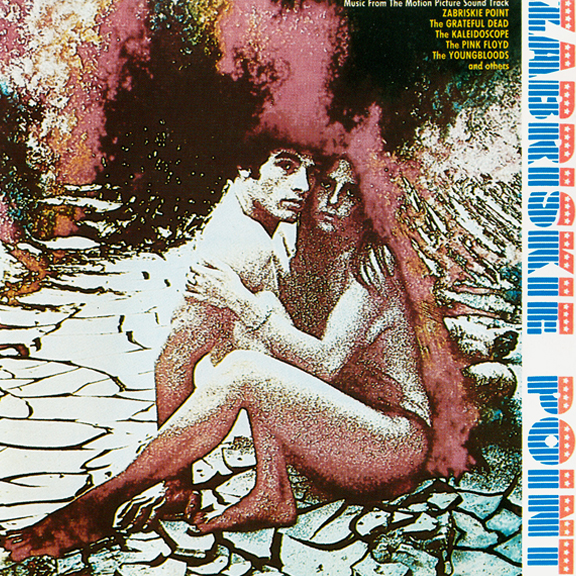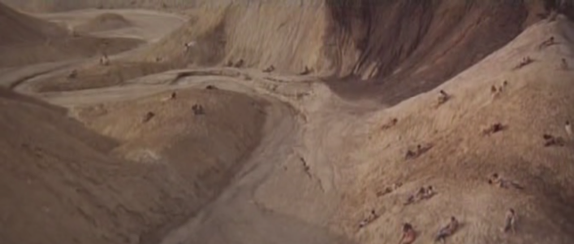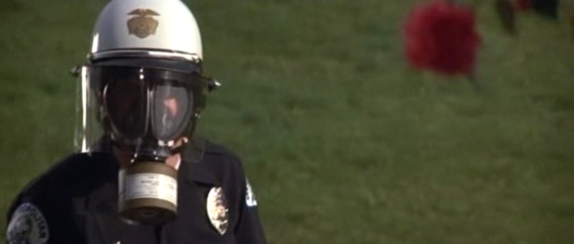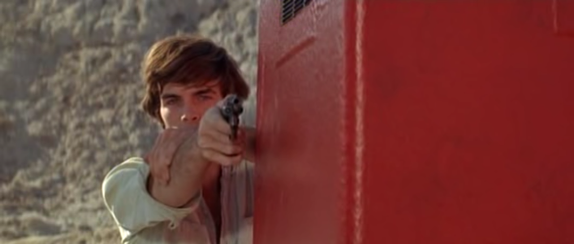Ultra Stereo #1 – Zabriskie Point


Hi folks, and welcome to the inaugural post of Ultra Stereo, Flicks new blog focusing on music and film by yours truly, Alan Holt.
I am a big fan of film soundtracks, both as part of a film and as semi autonomous albums. A good soundtrack album will often have unreleased music from artists I enjoy – say in the case of the album I am discussing later in this piece, Zabriskie Point – or, in the case of the soundtrack for The Good, the Bad and the Ugly, compelling music that is unique to the film.
I have many favourite soundtracks. I have been buying them for as long as I can remember. Growing up we always had in them in the house. My parents owned the soundtrack to Robert Altman’s Nashville which they played pretty much non-stop through most of the 70s and 80s. I won’t be writing about that one – not that its a bad soundtrack or anything – it’s just that there are limits of where I’ll go for the sake of a decent and entertaining blog post. Basically reacquainting myself with that album would be like opening the adamantine gates of Hell that was my adolescence. I’ve spent the last couple of decades working very hard to repress those dark years and I’m not about to let that horde of spitting gibbering scabrous demons out quite yet. I am shuddering as I type this. Man, you know, they played that record a lot…
The first soundtrack I remember buying with my own money was Repo Man – a soundtrack I will definitely discuss in a future blog. Throughout the 90s I spent a lot of time in second hand record stores, thrift stores and flea markets buying old James Bond, Ennio Morricone westerns, Bernard Herman horror soundtracks, pretty much anything as long as it was something I wanted to listen to, had a cool cover or would sound cool on the radio. For much of the 90s some friends and I had a radio show on 95BFM called The Solar Furnace Hour. The show had a fairly broad and open format so it was not unusual to play, for instance, the music from the shower scene from the original Bernard Herman score for Psycho right after a “just-try-and-hold-back-the-tears” Lou Barlow number and just before a piece of sandpaper to the ears Japanese noise – I recall track #1 off of Hanatarash III was always a popular ‘go to’.
I always found the added sway that a piece of music can command when it’s coupled with a strong visual really interesting. Songs that you never really cared for before can be transformed and suddenly be imbued with appeal they never had before. I was never a fan of MOR 70s band Stealer’s Wheel but the ear removal scene in Reservoir Dogs has forever changed that song and given it some depth it probably does not deserve.
Another case in point: I recall when I first saw Back to the Future as a Huey Lewis & The News despising teenager in the mid 80s I could not help but be somewhat uplifted watching Michael J Fox careening around on his skateboard to the Huey’s The Power of Love – a fact I still find disturbing to this day, and I’m more than a bit embarrassed to admit – but heck, I guess that is The Power of Film.
That same year I saw another film that would have a big impact on me, a film very different from Back to the Future or any its sequels for that matter. There were no jokes, no time machines or mad scientists. There were however revolutionaries, a very long psychedelic desert orgy scene, slow motion explosions and Pink Floyd. The film is called Zabriskie Point and I first came across it while watching daytime TV sometime in 1985. My friend Philip Davis and I both went to Rosehill College in Papakura. We were both 15 and in the fifth form. Phil lived nearby and we used to hang out at his place during lunch hour and watch TV and listen to music. One afternoon we turned on the telly and happened to catch most of the desert scenes where the two main characters Daria and Mark chat and flirt… and have sex in the desert.
We were like “woah, we are watching sex on TV!” Normally all we had to watch at this time was Selwyn Toogood and friends giving advice to housewives on Beauty & the Beast not fit young 60s kids rolling around nude in the dust while Jerry Garcia accompanied them with an extended psychedelic blues raga. And not only that – not only were Daria and Mark getting it on in the dunes but suddenly there were thirty couples getting down as well??! Where did they come from? What’s going on? How do these new additions fit into the story? Needless to say, our minds were blown. How this managed to be scheduled during the day on a fairly conservative time slot during a fairly conservative state owned TV channel during a fairly conservative era is still a mystery.
It was years before I discovered that the film was actually Zabriskie Point. We did not actually manage to catch the rest of the film as we had to scoot back to school. We were bummed. However it was probably just as well, had we stayed and viewed the extremely trippy ending with its six minutes of slow motion explosions synced to Pink Floyd’s highly lysergic Come in Number 51, Your Time Is Up we probably would have ditched school full stop and become full-time LSD-fueled revolutionaries, or worse – full-time deadheads.
Zabriskie Point was Italian director Michelangelo Antonioni’s big budget Hollywood film following the highly successful Blow-Up. It was a notoriously fraught production, years in the making and the result was a film that was unfortunately badly received by both mainstream audiences and the underground culture the film was depicting and hoping to capture. The film made $900,000 at the box office but cost around seven million to make. Antonioni blamed the high cost of the production on what he saw as a highly inefficient and wasteful US film industry. Regardless, the film is now considered a classic partly due to the appeal of the soundtrack.
The film’s plot roughly concerns two young people Mark and Daria. Mark is the quintessential angry young man. Mark may or may not have shot a policeman during a protest that goes bad. He goes on the run and steals a plane. He lands in the desert where he meets Daria, who is on her own somewhat vague mission. They meet, walk around the desert, chat, have the aforementioned sex, chat some more and then part ways. I won’t give any more of the plot away although the film is not really about the “plot” so much as it is about the US in the 60s, capitalism, revolution, youth, and who Mark and Daria may be as people at the beginning of the film compared to who they are at the end.
As I stated before, the soundtrack to the film is one of the reasons the film has attained its current cult status. It includes music from Pink Floyd, The Youngbloods, The Kaleidoscope, Jerry Garcia, Patti Page, the Grateful Dead, Musica Electtronica Viva, the Rolling Stones and John Fahey. The Rolling Stones and Musica Electtronica Viva were not included on the soundtrack album. Musica Electtronica Viva – an experimental group based in Italy – were no doubt just too weird for the record buying public and the Stones were probably too expensive.
The music is very much integral to the film, underlining the languid expansive psychedelic tone of the film. Some of the music is synchronized on top of the action, and elsewhere songs are incidental, snippets heard while the characters are driving in their car or walking by a radio. All are important.
The love scene in the desert was a massive focus for Antonioni; Pink Floyd, John Fahey and Kaleidoscope were all asked on separate occasions to provide the music for that scene before he eventually settled on Jerry Garcia of the Grateful Dead. His piece is perfect.
Other standouts include opener Heart Beat, Pig Meat by Pink Floyd – a groovy heartbeat like drum rhythm interspersed with spooky processed guitar sounds, organ solos and samples from TV and radio – and the final track also by Pink Floyd (Come in Number 51, Your Time Is Up) which is pretty much the reason I purchased the album in the first place. This track is a reworking of Careful With That Axe Eugene from Ummagumma and is the band’s best post-Syd psych out although I must admit it sounds best when accompanied by the slow motion 20th century eyebleed that is the film’s climax/denouement. The metaphoric end of US consumer culture has never looked – or sounded – so good.






















